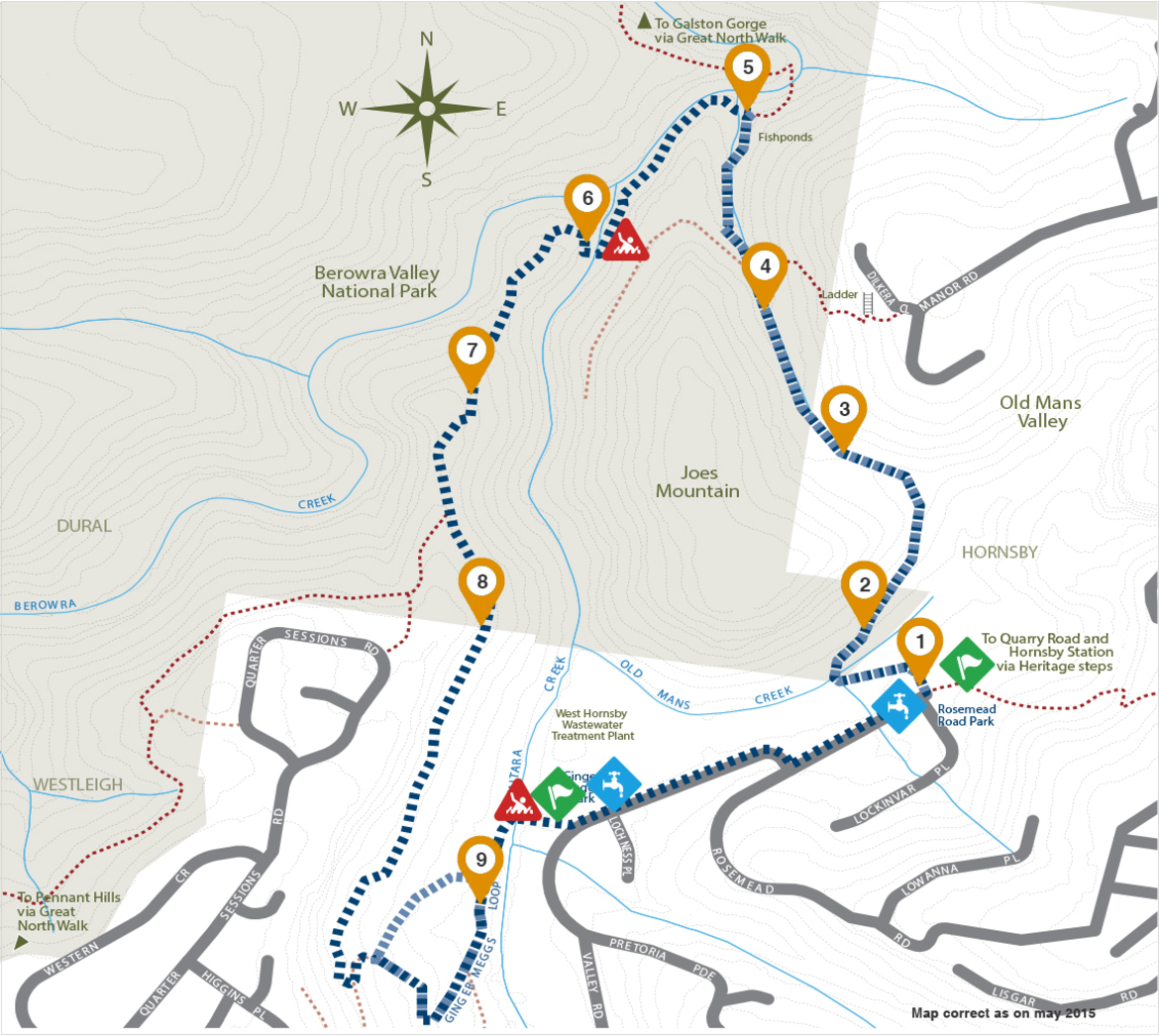The dominant tree in this area is the Sydney Blue Gum (Eucalyptus saligna). With its smooth slate-grey bark and rough, brown ‘sock’, it forms part of an extremely rare ecological community known as Blue Gum Diatreme Forest. As little as 14 hectares of this community remains in existence and may now be solely confined to the Hornsby local government area. It occurs here because of the deep clay soils, produced by the weathering of the volcanic rock of the Hornsby diatreme which is located under your feet.
Timber has been harvested in this valley from the 1820s right up until the 1960s, and the trees we see today are comparatively young natural regrowth.
Notice the wriggly markings on the smooth trunks? These are made by Australia’s largest native land slug, the Red-triangle Slug (Triboniophorus graeffei) as it grazes upon algae.


